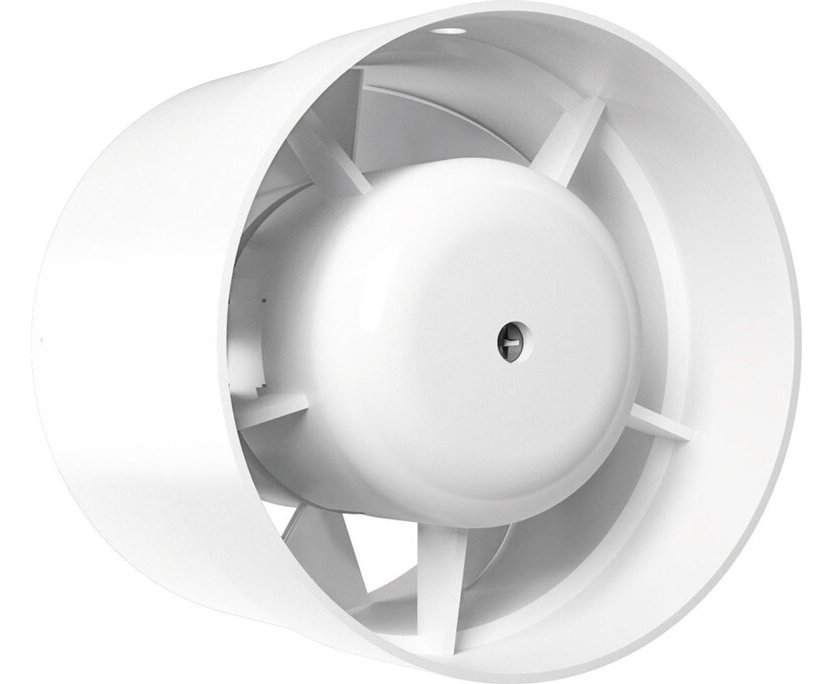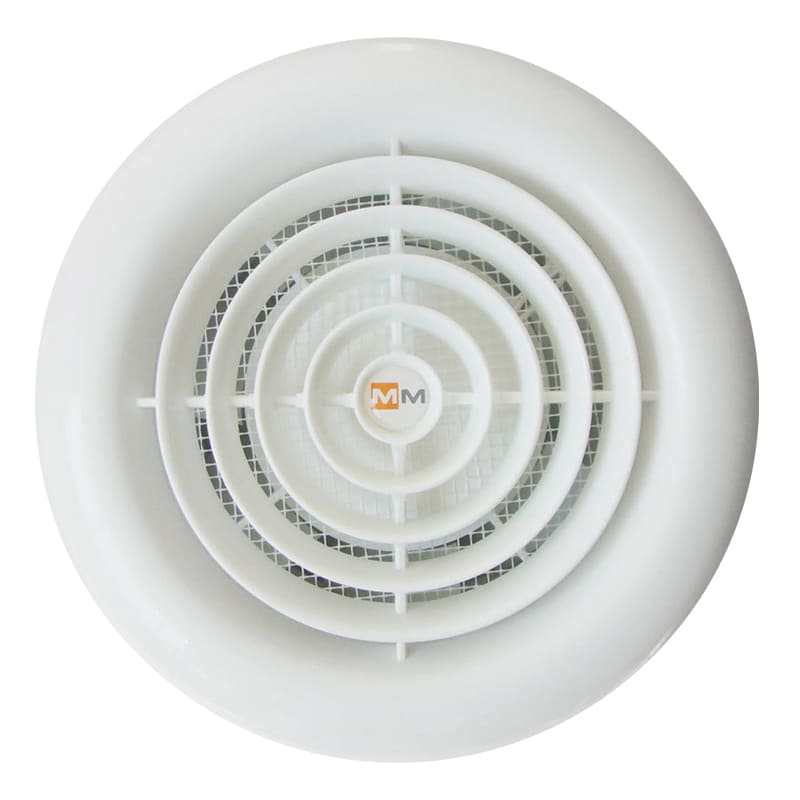Ventilation is one of the most important aspects of maintaining a healthy home. Without proper ventilation, air quality can suffer and cause health issues for occupants. Installing an HRV Bathroom Fan (Heat Recovery Ventilator) in your home can help to maintain air quality and make sure your home is properly ventilated. In this blog post, we’ll discuss the importance of proper ventilation and the benefits of using an HRV in your home. We’ll cover topics such as how HRV systems work, the energy efficiency of HRV systems, and the many ways an HRV can improve your home’s air quality.
How a Bathroom HRV Works
HRV, or heat recovery ventilation, is a ventilation system that provides fresh air while also retaining energy. Bathroom HRV works by using a heat exchanger to transfer heat from the stale, indoor air being exhausted out of the home to the fresh, outdoor air that is being brought into the home. This helps to regulate temperature and humidity levels within the home, while also providing clean, fresh air for improved indoor air quality.
The HRV unit typically consists of two separate ducting systems, one for exhaust and one for fresh air intake. The stale indoor air is pulled out of the home through one duct, while the fresh outdoor air is brought in through the other. The heat exchanger allows the two air streams to pass by each other without mixing, while also transferring heat from the outgoing air to the incoming air.
This process helps to reduce the amount of energy needed to heat or cool the incoming fresh air, resulting in significant energy savings over time. HRVs are particularly useful in climates with extreme temperatures, as they can help to keep indoor temperatures consistent while also providing fresh air.
 The Benefits of HRV Home Ventilation System
The Benefits of HRV Home Ventilation System
Now that we know how an HRV works, let’s explore the benefits of having one in your home.
- Improved Indoor Air Quality: HRVs are designed to expel stale air and bring in fresh air from outside. This constant exchange of air helps improve indoor air quality and reduce allergens, pollutants, and excess moisture in the air.
- Increased Comfort: HRVs can help regulate indoor temperatures and humidity levels, creating a more comfortable living environment. In the summer, the HRV Home Ventilation System will pull in cool air from outside to keep the home cool, and in the winter, it will capture the heat from the outgoing stale air and transfer it to the incoming fresh air, keeping the home warm.
Energy Efficiency:
- HRVs help reduce energy consumption and save money on utility bills by efficiently ventilating your home. The fresh air brought in is pre-conditioned by the outgoing stale air, reducing the need for your heating or cooling system to work harder.
- Health Benefits: By constantly exchanging indoor air with fresh outdoor air, an HRV helps reduce the build-up of harmful pollutants, bacteria, and viruses in your home. This can improve respiratory health and reduce the risk of illness.
- Noise Reduction: HRVs have sound-absorbing materials and low-noise motors, making them quiet to operate and reducing noise pollution in your home.
Overall, the benefits of an HRV are vast, from improved indoor air quality to reduced energy bills. Investing in an HRV for your home can provide a healthier, more comfortable, and energy-efficient living environment.
The Different Types of HRVs
When it comes to choosing the right HRV system for your home, it’s important to know that there are different types available. The most common types of HRVs are:
- Exhaust-air HRVs: This type of HRV extracts stale air from the home, and replaces it with fresh air from outside. This system is best suited for homes in which the air inside is more polluted than the air outside.
- Supply-air HRVs: This type of HRV brings fresh air into the home, and extracts stale air from inside. This system is best suited for homes in which the air outside is more polluted than the air inside.
- Balanced HRVs: This type of HRV both extracts stale air and brings in fresh air in equal measure, creating a balanced air flow in the home.
- Energy-recovery HRVs: This type of HRV not only exchanges air, but also recovers the energy from the exchanged air to help reduce heating and cooling costs.
When choosing an HRV Home Ventilation
It’s important to consider your home’s specific needs and any existing ventilation systems. A professional HVAC technician can help you choose the right HRV Home Ventilation system for your home, and install it properly. Additionally, it’s important to consider the size of your home and the number of occupants. A larger home or more occupants may require a larger HRV system with higher capacity to ensure adequate ventilation. Similarly, a smaller home or fewer occupants may not require as large of an HRV system.
No matter the type of HRV system you choose
The benefits of proper ventilation are numerous. A properly installed HRV can improve indoor air quality, reduce humidity levels, prevent the buildup of harmful gases, and promote a healthier living environment for you and your family. So if you’re looking to improve the air quality in your home, consider installing an HRV system with the help of a professional HVAC technician.
How to Install an HRV
Once you have decided to install an HRV, it’s important to understand the steps involved in the process. Here’s a quick guide to help you install your HRV successfully:
Step 1: Choose the Right Location
The Home HRV System unit needs to be installed in a location that is central to your home’s layout. It’s recommended to install the unit in an easily accessible area, like a basement, crawl space, or attic. The unit should be away from any obstructions and have a clear path for the ductwork.
Step 2: Install the Ductwork
Before you begin installing the HRV, you’ll need to make sure you have all the necessary ductwork and fittings. Begin by installing the supply and exhaust ducts. These ducts should be insulated to prevent heat loss or gain.
Step 3: Mount the HRV Unit
Once the ductwork is installed, you can mount the HRV unit. Secure the unit to the wall or floor, making sure it is level. Connect the ductwork to the HRV unit using the appropriate fittings.
Step 4: Install the Controls
The controls for the HRV unit should be installed in an easily accessible area. Make sure to follow the manufacturer’s instructions when installing the controls.
Step 5: Connect the Power Supply
The HRV unit will need to be connected to an electrical power supply. If you’re not comfortable with electrical work, it’s recommended to hire a licensed electrician to do this step.
Step 6: Test the HRV System
After installation, it’s important to test the HRV system to make sure it’s working properly. Check for any air leaks in the ductwork, and make sure the controls are functioning as they should.
By following these steps, you can successfully install an HRV system in your home
Ensuring that you and your family breathe cleaner, healthier air. If you’re not comfortable with DIY installation, it’s always a good idea to hire a professional HVAC technician to install the Fresh Air Heat Exchanger for you. It’s important to note that installing an HRV system may require a permit from your local building department. Be sure to check with your local authorities before beginning the installation process.
Additionally, it’s recommended to have your HRV system serviced annually by a professional technician to ensure it continues to function properly. Installing an HRV system can be a great investment for your home.
Not only does it improve the indoor air quality by removing stale and polluted air
But it also provides fresh, filtered air throughout your home. The system works by transferring heat from the stale, outgoing air to the fresh incoming air, which helps to maintain the temperature inside your home while also increasing energy efficiency. Additionally, HRV systems can help to reduce the risk of health problems caused by indoor air pollutants, such as allergies and respiratory issues. They can also prevent moisture buildup.
This can lead to mold growth and other water damage issues in your home.
There are different types of HRVs available, including standalone units that are designed for individual rooms and whole-house systems that provide ventilation for the entire home. It’s important to choose the right type of HRV based on your specific needs and budget.
Overall, an HRV system can provide numerous benefits for your home and your family’s health. If you’re considering installing one, be sure to consult with a professional HVAC technician to determine the best system for your needs and ensure a proper installation.
Conclusion
Investing in an HRV system for your home can be one of the best decisions you make for the health and wellbeing of you and your family. With its ability to improve indoor air quality, control humidity levels, and increase energy efficiency, an HRV system can provide many benefits for your home. Plus, the various types and models available make it easy to find an HRV that suits your needs and budget. So, don’t hesitate to consider an HRV system for your home and experience the many advantages it has to offer. Remember, proper ventilation is essential for a healthy and comfortable living environment.
| Other Good Articles to Read |
| Niche Blogs Connect |
| Blogs 97 |
| Blog Stitution |
| Blogs Unplugged |
| Blogs Cotch Rouge |
| Blog Signatr |
| Blog Sintonias |
| Blog Zilla |
| Consumer Forums |
| Finance Forums |
| G Blogs |
| Too Blog |



